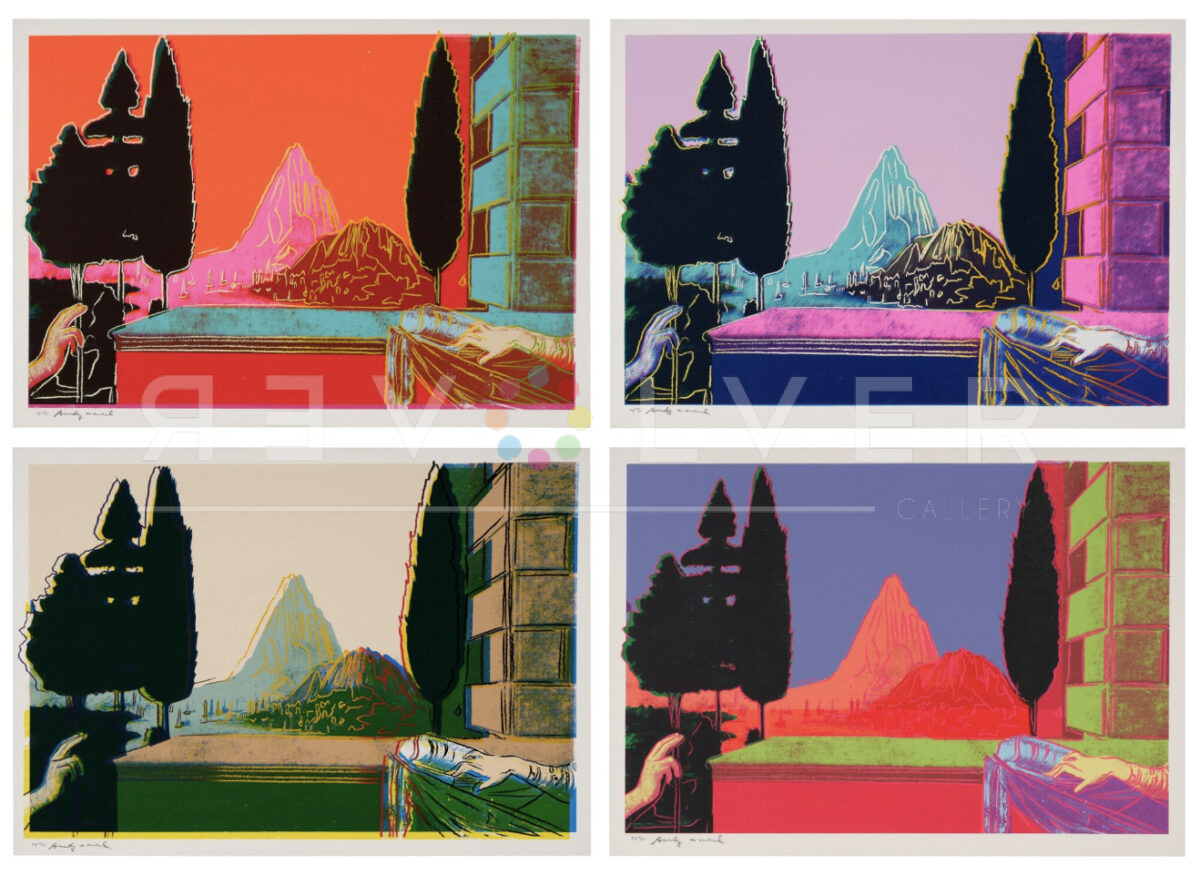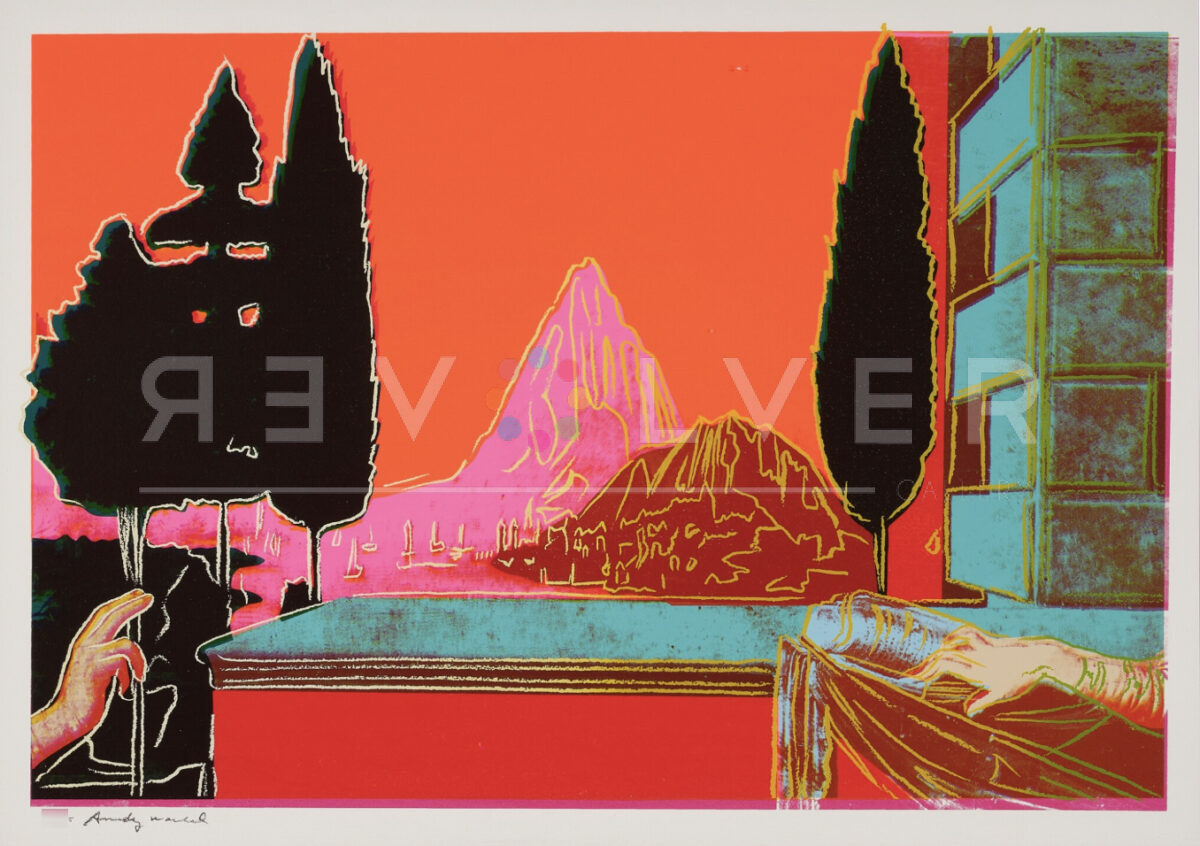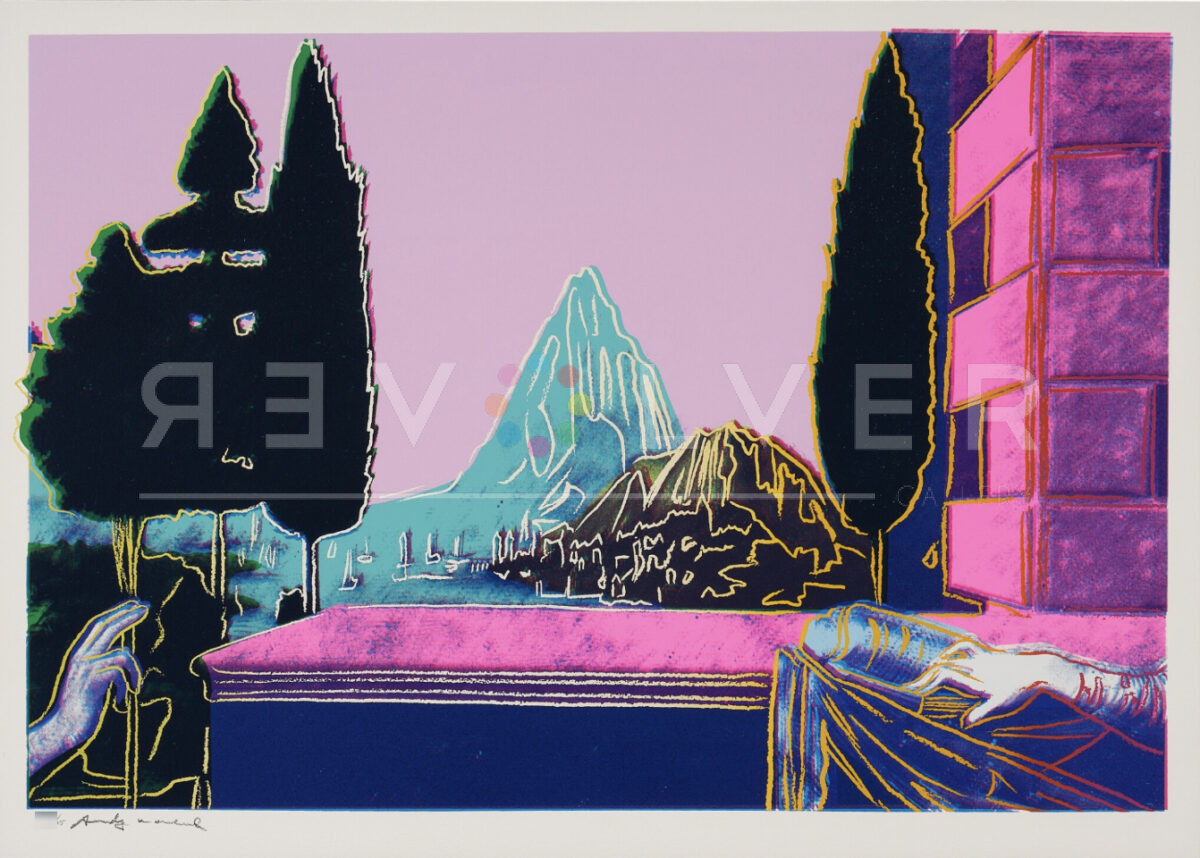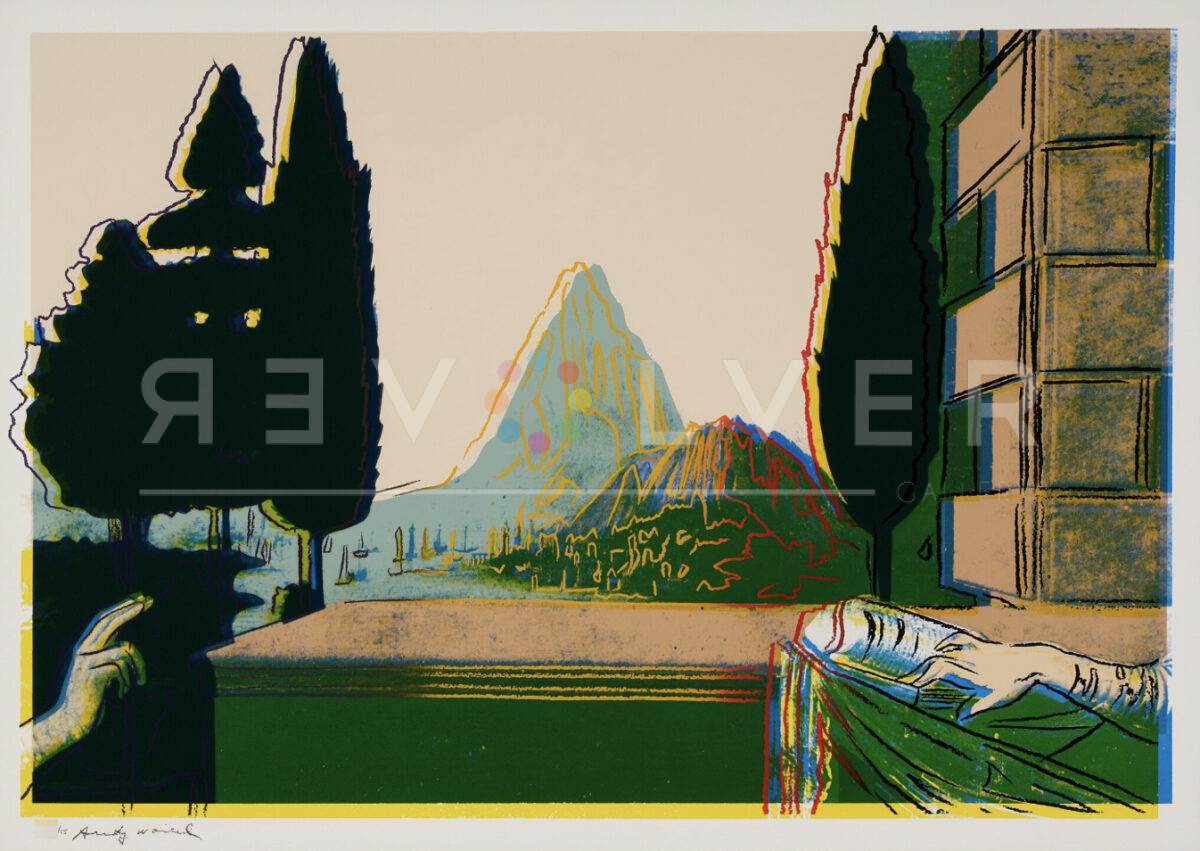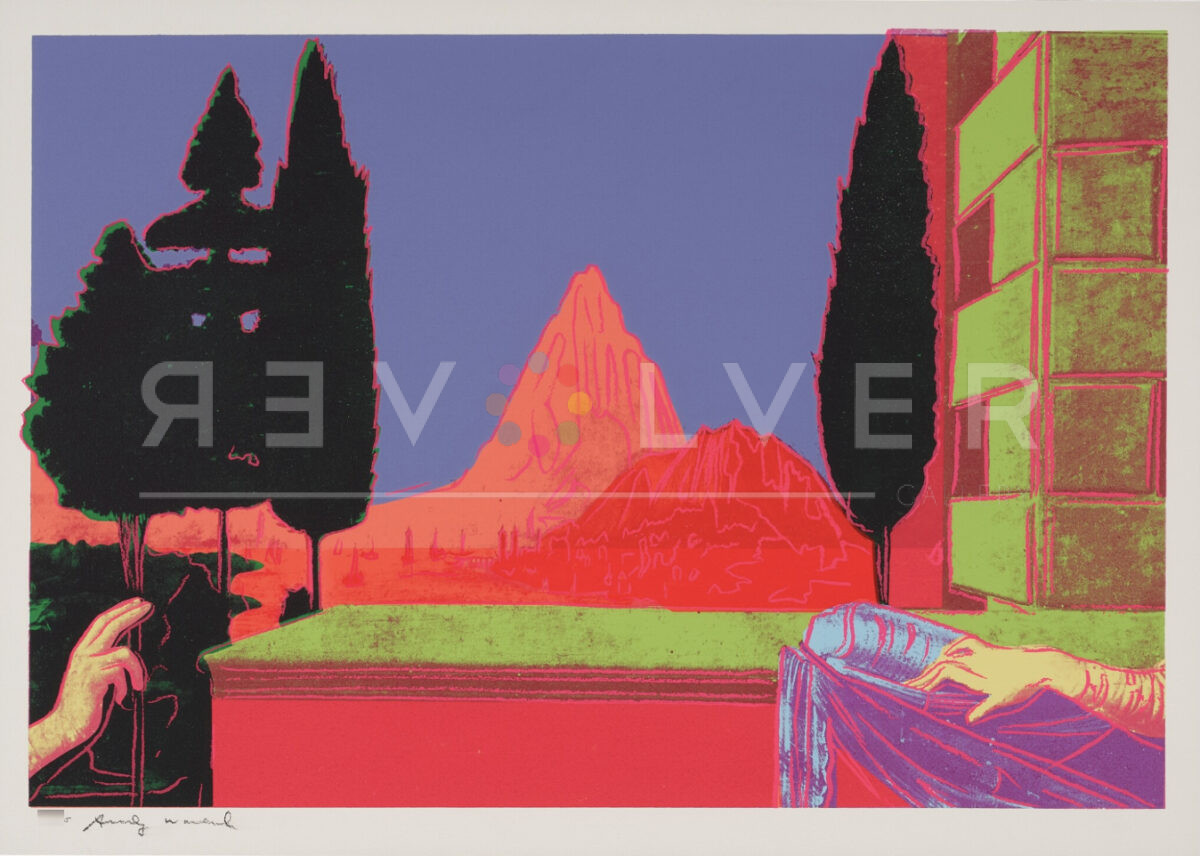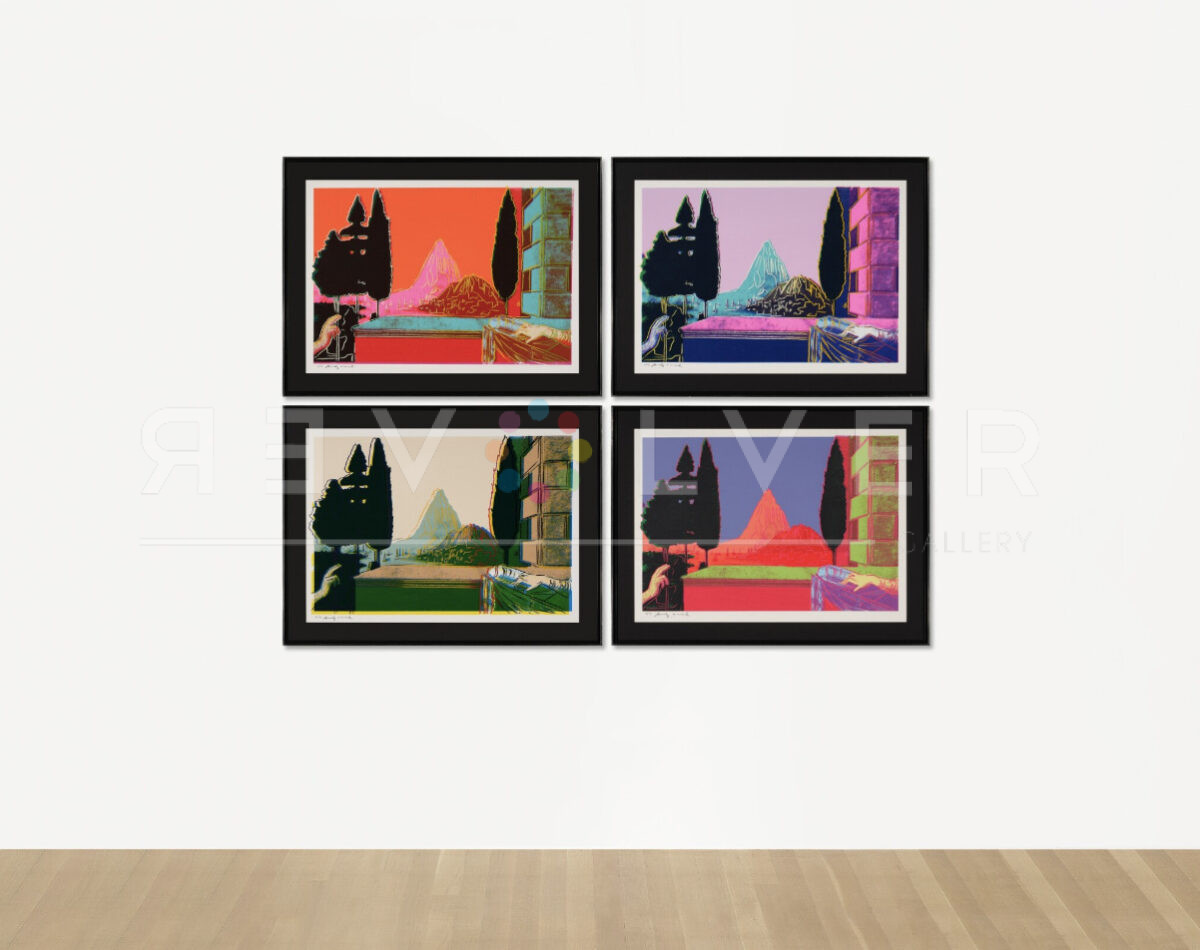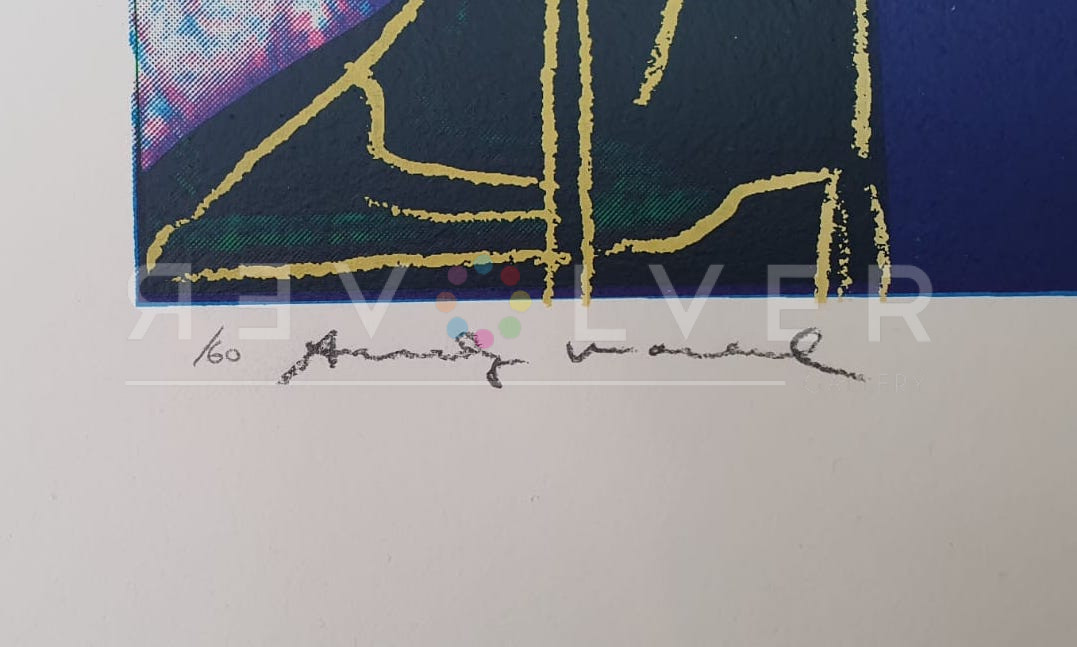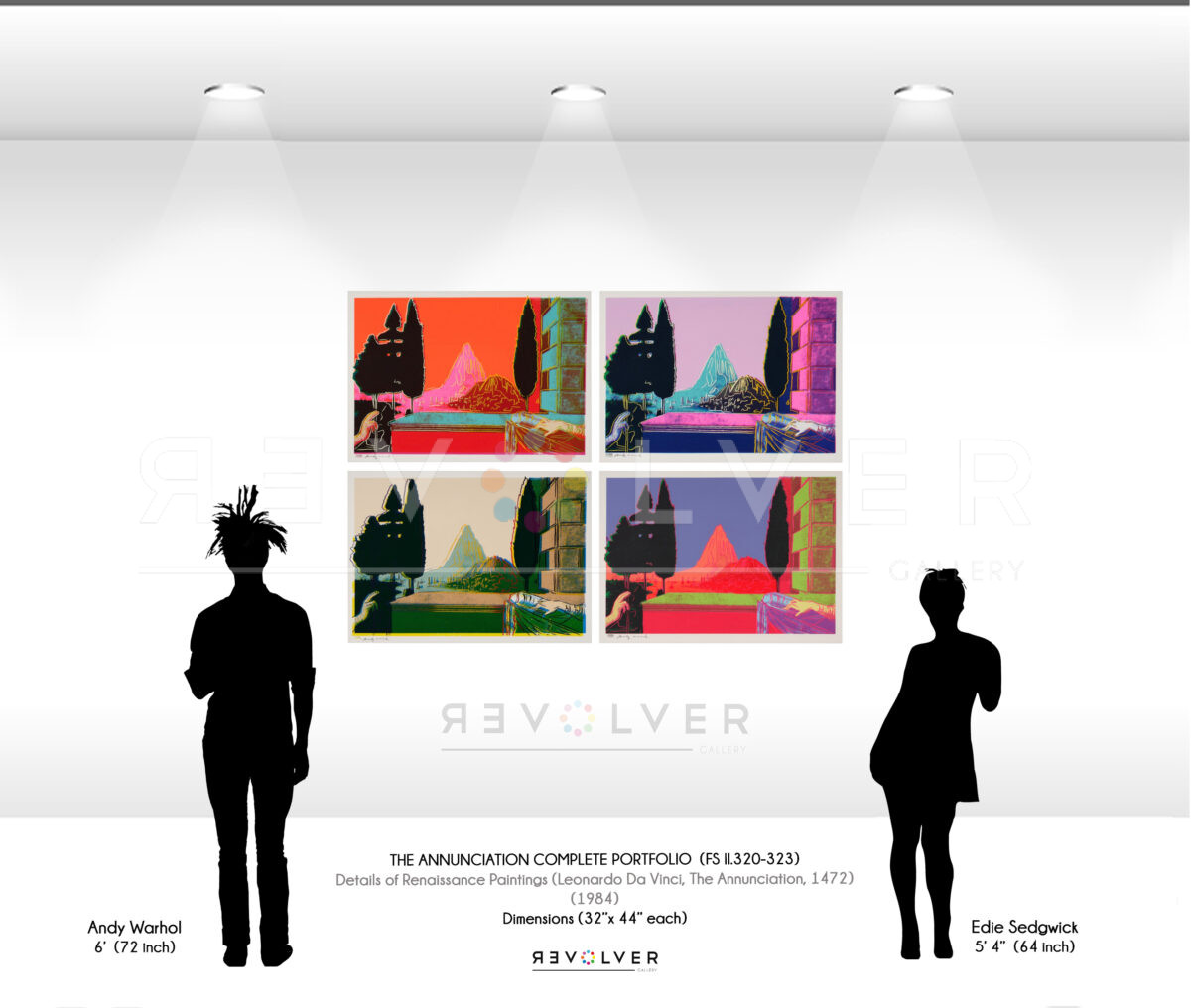The Annunciation by Andy Warhol is a series of four prints from 1984 based on Leonardo Da Vinci’s artwork of the same name. Warhol’s interpretation of the famous Da Vinci’s painting offers a bold reimagining of the Old Master’s early work that shifts the focus from the divine narrative to the beauty of the natural landscape. As with other artworks from his “Details of Renaissance Paintings” series, Warhol’s crop of the original painting is radical; he excises the central figures almost entirely, leaving only the angel’s gesturing hand and the Virgin’s poised fingers at the periphery. This daring composition transforms the biblical scene into a serene landscape, framed by the distant mountain and enveloping trees that become the new protagonists.
Warhol’s rendition is a departure from the young Leonardo’s meticulous approach to color and form, where every detail, from the angel’s shadow to the Virgin’s drapery, was rendered with a commitment to naturalism and perspective. Instead, Warhol’s screenprint is dominated by the graphic quality of the landscape, now infused with his iconic Pop colors. The lush realism of Da Vinci’s work is replaced with a landscape that seems to pulsate with an almost electric vibrancy, challenging the viewer’s expectations of Renaissance art.
The original painting’s religious significance is subverted by Warhol’s focus on the landscape, suggesting a modern indifference to the sacred, a gaze that is drawn to the aesthetic rather than the spiritual. By doing so, Warhol not only comments on the changing values of society but also on the nature of observation itself—how the eye is drawn to form and color over narrative and context.
In his Details of Renaissance Paintings series, Warhol’s technique of isolating and highlighting certain elements of classical masterpieces reflects his fascination with the concept of fame and the commodification of iconic images. In Leonardo Da Vinci, The Annunciation, the mountain and trees, once mere backdrops to the divine event, are now celebrated for their own inherent beauty. Warhol’s application of contemporary colors and his signature screen printing methods reinvent Da Vinci’s work, presenting it with a new, modern-day aura that resonates with the ethos of the Pop Art movement. This reinterpretation is not just a visual spectacle but a conceptual statement, positioning Warhol himself as a bridge between the reverence for historical art and the bold, irreverent spirit of contemporary culture.

